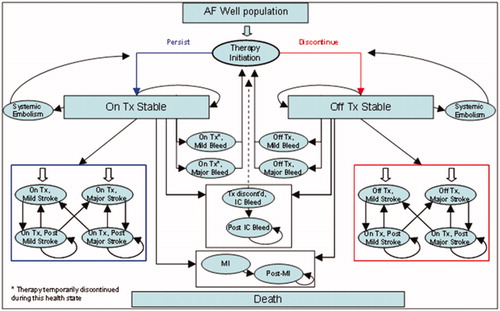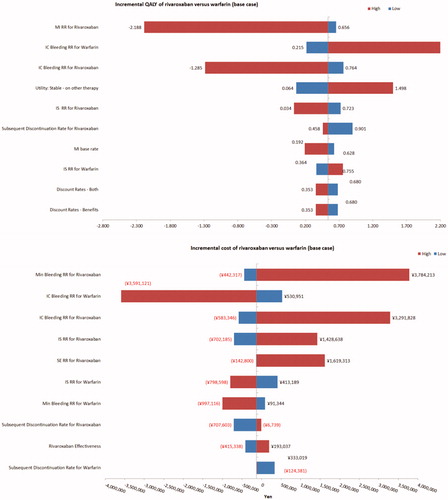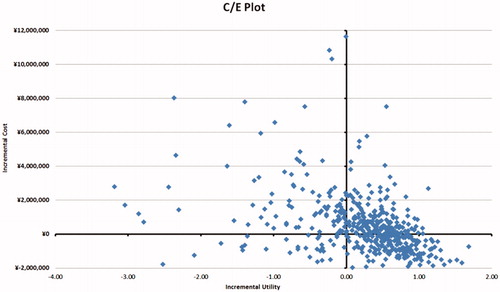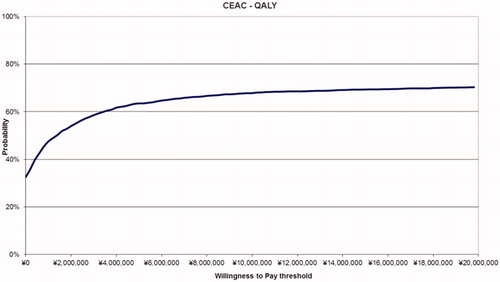Figures & data
Figure 1. Model structure. Permanent events are boxed; transient events are non-boxed. AF: atrial fibrillation; IC: intracranial; MI: myocardial infarction; Tx: treatment.

Table 1. Case fatality and mortality rates.
Table 2. Overview of drug acquisition, monitoring visits, and event treatment costs.
Table 3. Utility parameters.
Table 4. Results of cost-effectiveness analysis.
Figure 2. Results of one-way sensitivity analysis (Tornado diagrams). AF: atrial fibrillation; IC: intracranial; MI: myocardial infarction; RR: relative risk; SE: systemic embolism.

Table 5. Results of the network meta-analysis (treatment effect data for base case analysis and scenario analysis).


